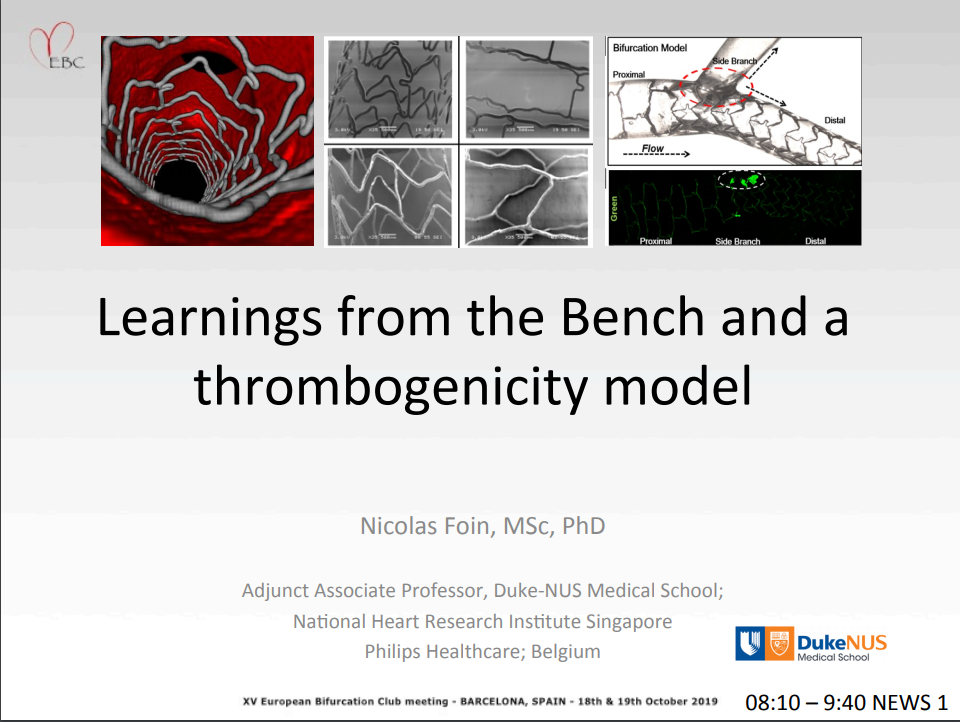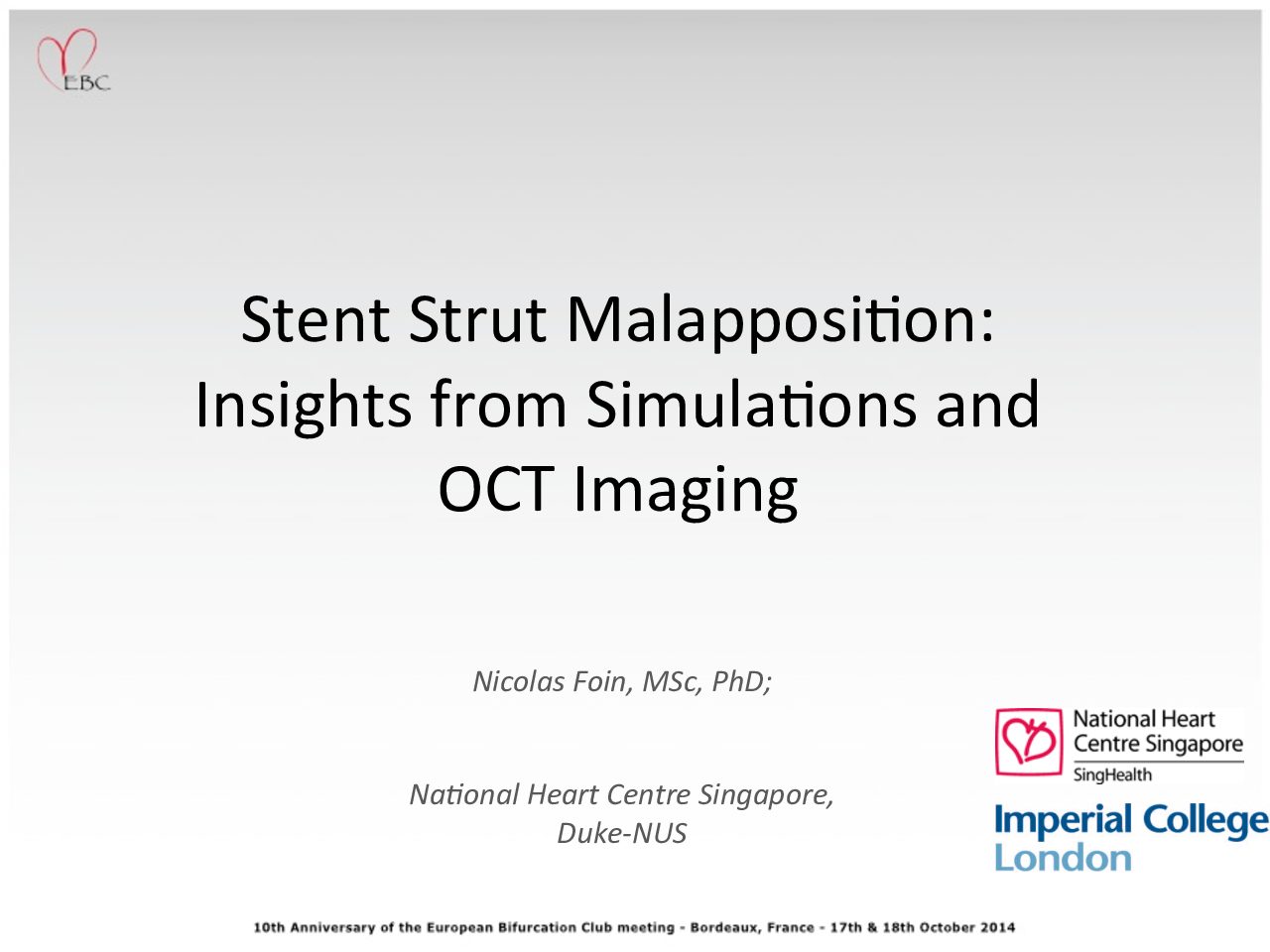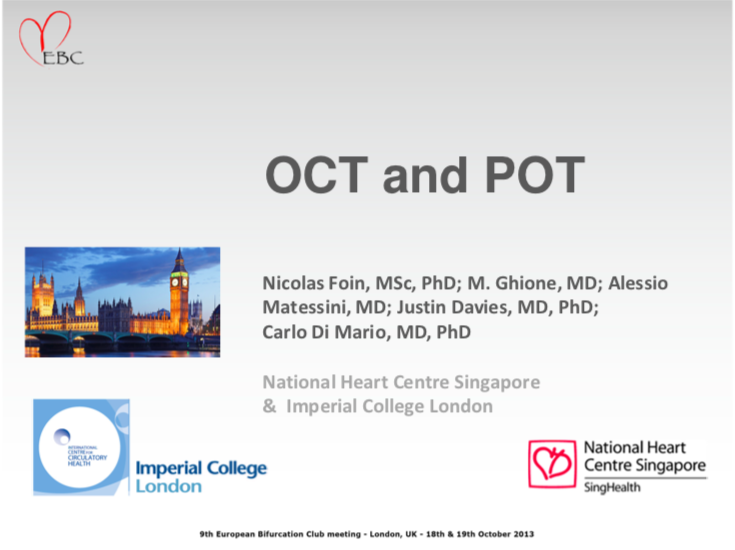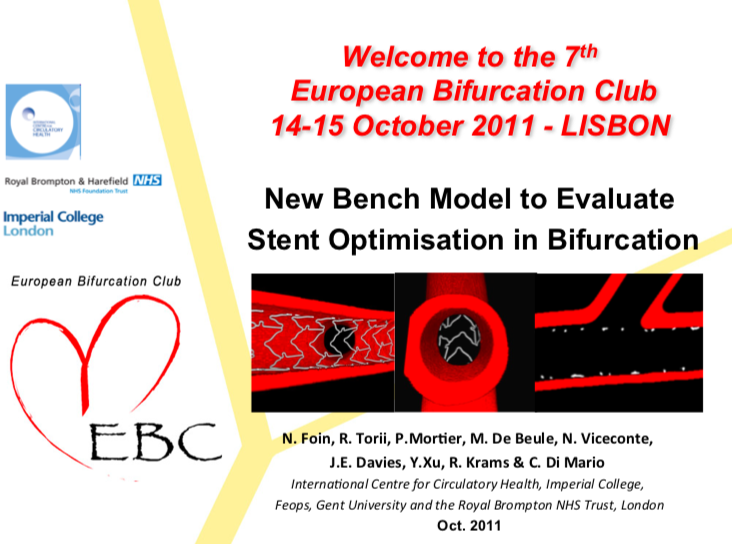Learnings From the Bench and a Thrombogenicity Model
European Bifurcation Club 2019, EBC 2019 - Barcelona, Spain NEWS 1 Learnings From the Bench and a Thrombogenicity Model Author: Nicolas Foin, MSc, PhD, National Heart Research Institute Singapore; Philips Healthcare, Belgium LEARNINGS FROM THE BENCH Bench models allow to study questions in controlled and reproducible experimental environments Make use tools such as Micro-CT, Radial & Longitudinal Strength tes;ng, 3D printing, Perfusion test, Histology, SEM Microscopy. LIMITATIONS It can only provide a partial model to investigate a question and cannot mimic the entire tissue /plaque characteristics and in-vivo biological response. Results can not always be transposed directly to in-vivo situations and should be interpreted with caution. Bench models complement, but do not replace clinical/imaging studies SUMMARY Stent underexpansion and stent malapposition distances affect flow disturbances and shear rate in a dose-dependent relation. Severe malapposition (ISA distance > 300 um) create higher shear rate with persitent malapposition + uncovered strut at follow-up. In-vitro experiments with perfused blood suggest that large malapposed stent segment create potential sites for platelet adhesion and clot development. Stent optimisation (expansion and apposition) with appropriate sizing, post-dilatation and imaging can improve local hemodynamic environment and reduce area of high shear disturbance.








